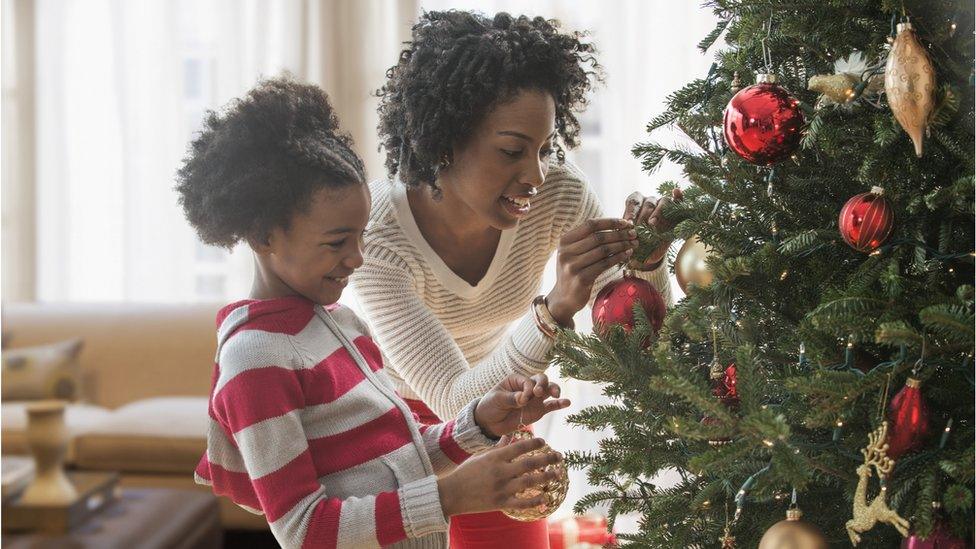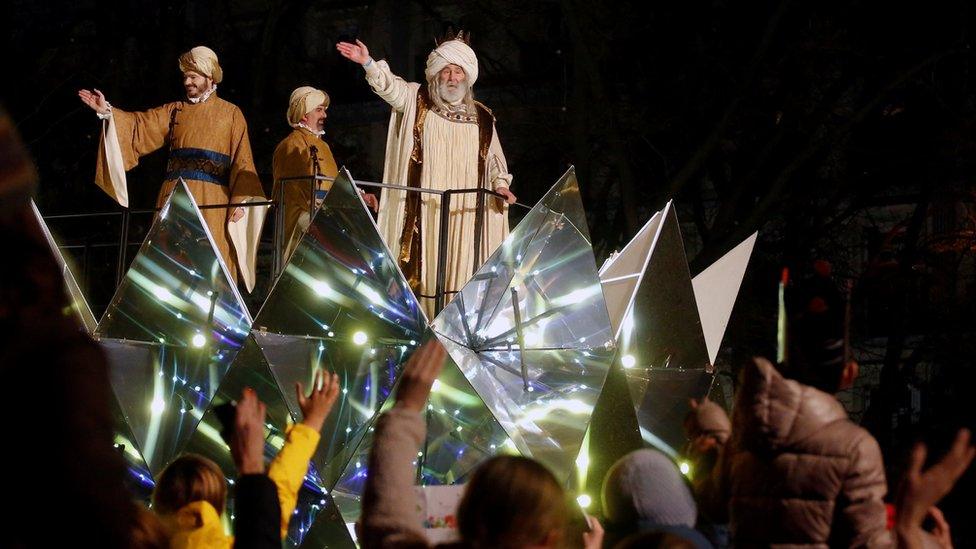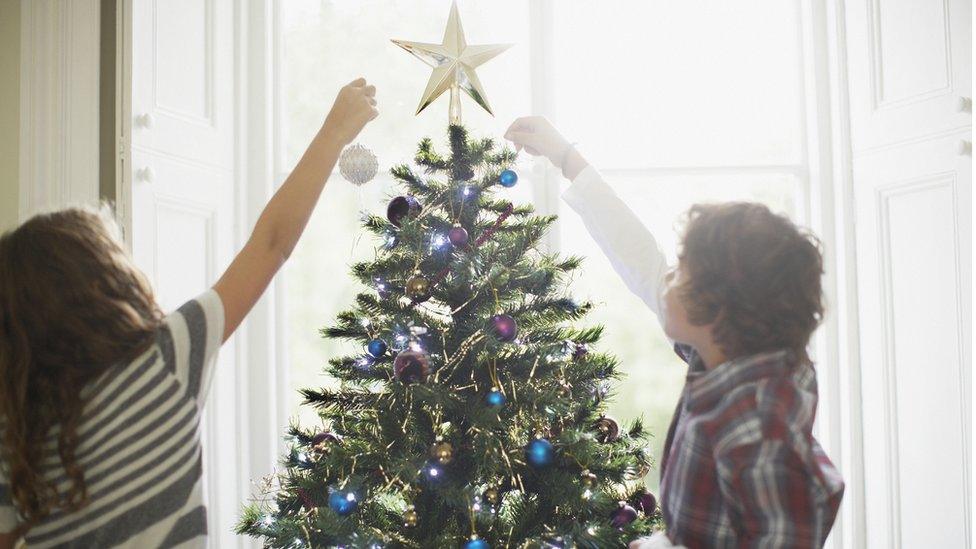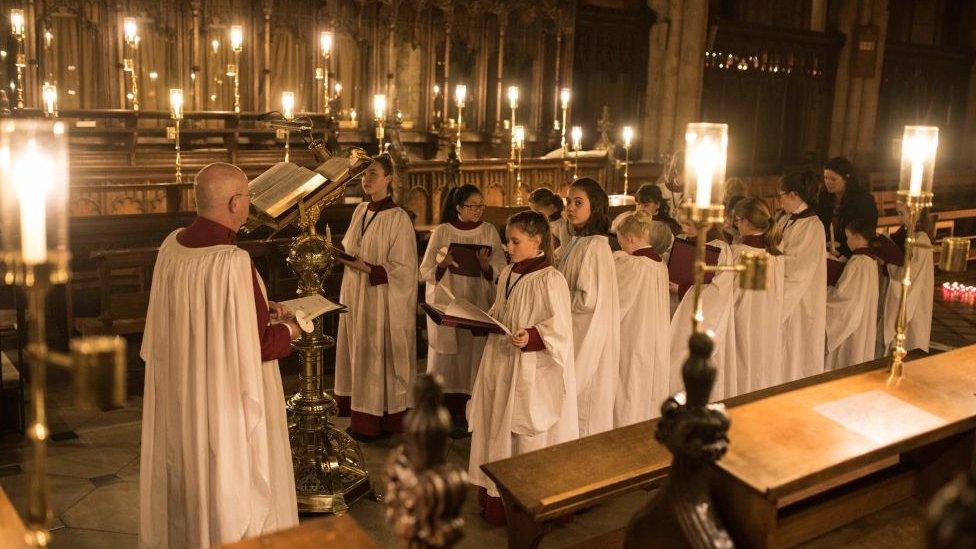Twelfth Night: When should you take down your Christmas decorations?
- Published
- comments

When do you take your Christmas tree and decorations down?
If this question is causing arguments with your family and friends, don't worry - we might just have the answer for you.
January, or Twelfth Night is traditionally the day which people pack away their Christmas decorations for another year.
But what is Twelfth Night, and when is it?
What is Twelfth Night?

The Three Wise Men wave to crowds gathered in Madrid in Spain to celebrate the feast of Epiphany
Twelfth Night is a Christian festival that takes place twelve days from Christmas Day, on 5 January.
Many people believe is bad luck to leave your Christmas decorations up at this point.
The twelve nights mark the coming of the feast of Epiphany on 6 January.
In some churches, Epiphany is when Christians celebrate Jesus being visited by the Magi - commonly known as the Three Kings, or Wise Men.
In other churches, it celebrates Jesus' baptism.
What is Candlemas?

If it gets to 5 Jan and you aren't ready to take your decorations down just yet - there is another option.
Falling exactly 40 days after Christmas on 2 February, Candlemas was observed as the official end of Christmas in medieval England, according to English Heritage.
It says that our medieval ancestors would leave them in place until the feast of Candlemas.
It explains that the date itself is an important feast day when traditionally the candles to be used in churches in the coming year would be blessed.

The choir at Ripon Cathedral prepare for Candlemas
There were also candlelit processions in honour of the feast.
"The tradition that it is bad luck to keep decorations up after Twelfth Night and the Epiphany is a modern invention," said Dr Michael Carter, English Heritage's Senior Properties Historian.
"Although it may derive from the medieval notion that decorations left up after Candlemas eve would become possessed by goblins!"
